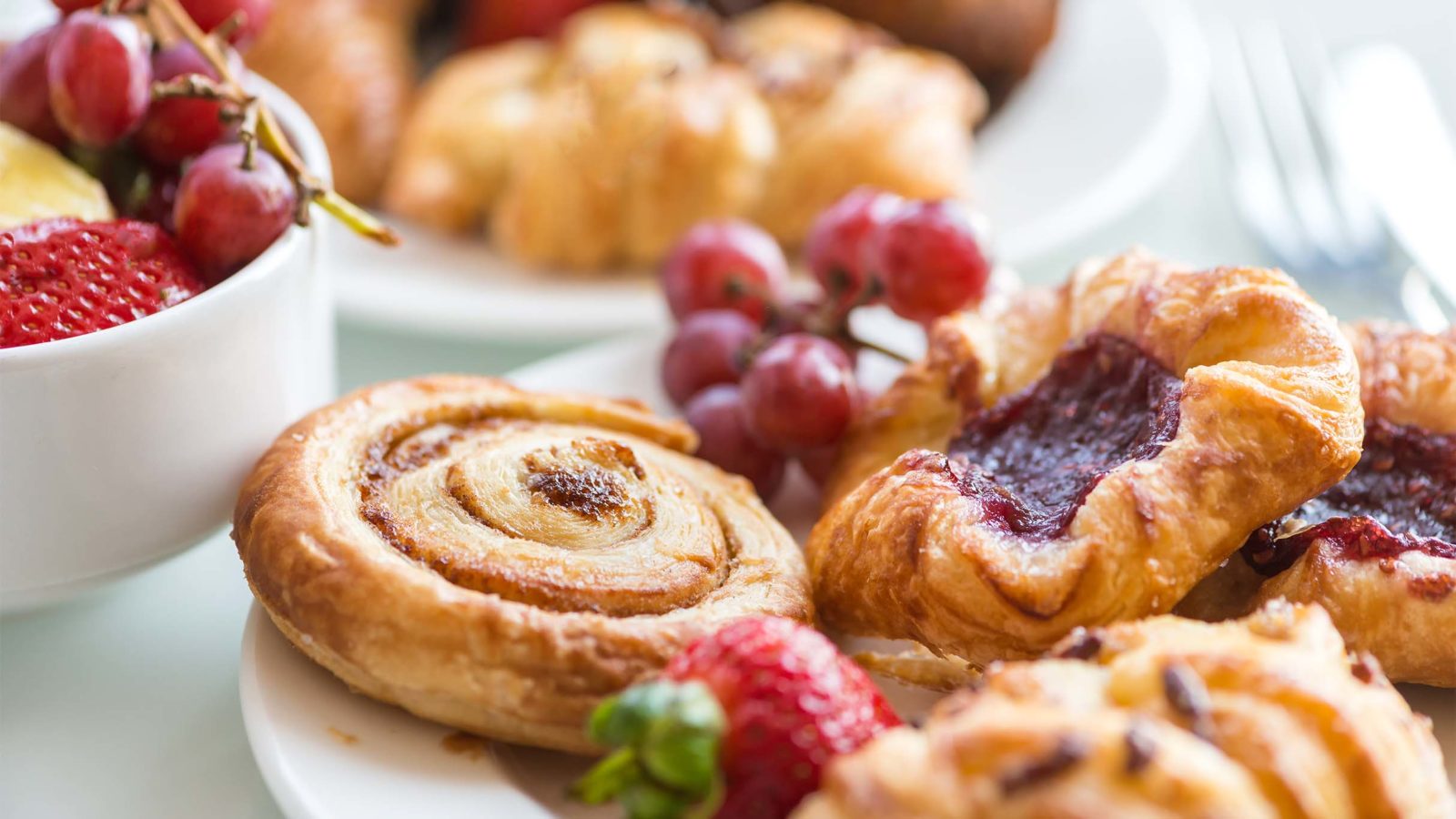Have you ever been tempted to buy a Danish pastry? You know the ones they have on the bakery shelves in your local supermarket. Did you know that a Danish is not called a Danish in Denmark? They actually call them Wienerbrød, “Vienna bread”, in Denmark, believe it or not. Why?
Well, the story goes that the recipe originally came from bakers in Vienna who were hired during a strike among bakery workers in Denmark in the 1850s. They brought with them new baking traditions and recipes, giving birth to what is now locally called Wienerbrød and internationally called a Danish.
When it comes to Danish pastries, I’m a connoisseur. I grew up in Denmark where the perfect Danish in the morning is considered a human right—or close to it. My father is a baker by trade and comes from an era where you did most things by hand. In my youth I worked in a bakery for a short period of time. You get the picture.
So, when I travel, I like to try the local version of the Danish. I have to confess, it is hard to find a Danish done right. And for good reason, making a real Danish is hard, let me explain . . .
The perfect Danish requires three crucial steps. Firstly, the dough must be chilled to the perfect temperature—if it is not at the precise temperature, the Danish will simply not come out right. Secondly, the dough must be worked by hand—machines cannot really replicate the process. Finally, the thin layers of rolled out dough must be folded many times with hard butter placed between the sheets of pastry. Sounds like hard work? You bet it is!
Let me tell you, when these steps are followed precisely by artisan bakers, the result is an extraordinarily light, almost fluffy pastry, that melts in the mouth. My mouth is watering just writing about them.
But buying a Danish outside Denmark can be a culinary Russian roulette because a Danish can look great on the bakery shelf, but it is only when you bite into it you learn what you have. Is it the light, fluffy perfection of the artisan baker, or the thick, dull, over-sugared lumps created by machines?
It turns out a Danish can be very much like Danes themselves. And not just Danes, but like any one of us. We work hard to look good from the outside. But it is only when we are put to the test it becomes obvious if we are the real deal, or a tasteless fraud. This is particularly true for those of us who are Christians.
The disciple Peter could talk a good game. Peter was sure he would never deny Christ. He was strong. Genuine. He believed he was the rock-solid real thing. Until he was put to the test, and he failed miserably.
We should not judge Peter too hard. Many a time we are just like him. We can also talk a good game, be sure of ourselves and we can even believe our own words. But we are all weak and fallible human beings. Like the pastry dough, only when we let the Master Baker work us by hand, over and over again, only when we are filled with the Holy Spirit, each fold in the process, only when we are shaped in each and every way by Him, only then can we become the beautiful Christians God wants us to be.
Walk into almost any supermarket and you will find “Danishes” for sale. But most of the time they are not real a Danish at all. They are most likely dense, dull, over-sugared Danish frauds. Walk into any church and you will find “Christians”, but how many of us truly have the fruit of the Spirit in our lives?
Let us ask the Master Baker to mould us and fill us, let us invite Him to create in us something genuine, desirable and beautiful. Because, take it from a Dane, the difference between the light, butter-filled real deal and a dense fake makes all the difference in the world.
Ole Pedersen is manager of Hope Channel New Zealand.






